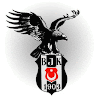The merger brought Electrolux several new plants, including one in Mariestad that manufactured compressor refrigerators and one in Alingsås that made equipment for food-service. One very important product group Electrolux gained through its purchase of Elektro Helios was stoves.
Food-service equipment was also a new product segment brought to the Group by the merger.
Tough international competition required an increased commitment to product development. The capacity of the central laboratory on Lilla Essingen was nearly doubled.

A contest was announced in the Nordic countries, but the results were disappointing. It was decided to hold another competition in Switzerland instead, where there was a great deal of graphic design expertise. The winner was Carlo L. Vivarelli with his entry ''Sun/globe concave/convex,'' which the Electrolux representatives on the jury especially liked. The new logo was deemed to be an original, attractive design with all the properties needed to ensure high identification value. For trademark protection reasons, the patent department had requested from the start that the components of the previous logo be included in the new. In Vivarelli's proposal, the sun or globe could be discerned in the circle enclosed by the ''E'' shape. The new trademark was successively phased in throughout the Electrolux Group in 1962.
The following year, Electrolux established a design department under the leadership of Hugo Lindström, who had come to Electrolux with the acquisition of Elektro Helios. Previously, Electrolux had hired designers on a consultant basis, but now they were building their own organization of in-house designers. One of the new department's first projects was the Luxomatic vacuum cleaner, which was introduced in 1964. It was the first of a new generation of vacuum cleaners with features such as a cord winder, self-sealing paper dust bags and a dust indicator that showed when the bag was full. It also came to be a symbol of the strength - and economic strength in particular - of the Electrolux Group and its vacuum cleaner division.
The year the Luxomatic was introduced, vacuum cleaner and floor polisher sales were the highest in Group history. Sales of vacuum cleaners, floor polishers and kitchen assistants increased by another 7% in 1965. And in 1967, for the first time in the history of the Electrolux Group, annual sales of vacuum cleaners and floor polishers exceeded one million units.
In 1959, Electrolux had the Design Laboratory in Chicago carry out a major study of its logo's identification value. The results showed that the Electrolux globe trademark no longer lived up to the day's demands on a logo and a brand. People found it difficult to distinguish and remember the basic features of the trademark, nor could they easily describe the impression it made on them. The study therefore concluded that a new corporate symbol and trademark should be designed. It should communicate the positive qualities of Electrolux and its products more effectively.
Reference:http://www.electrolux.com/node275.aspx













0 yorum:
Post a Comment